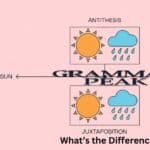The plural of mouse is tricky to figure out. Several want to know if they should use “mouses” or “mice.” This guide explains mouses vs mice and which is to use.
We’re going to look into what “mouse” really is, how a mouse is different from a rat, and where it originally came from. And then we’re going to do a lesson on putting “mouse,” “mice,” and “mouses” in a sentence. By the time you’re done reading this article, you will fully grasp these word.
What does the Word “Mouse” Mean?
The word “mouse” has different meanings. Most people think of the mouse (animal)—a small rodent. These cheese-loving creatures are common in many parts of the world. They are known for their small size, long tails, and quick movements.
In a different context, “mouse” refers to a
1. computer mouse. This device helps users control the
2. cursor control device on their screens. It allows users to move, click, and interact with their computers more easily.
The versatility of the word “mouse” reflects its importance in both everyday life and technology.
When we talk about “mouse,” we can mean either the animal or the device. Understanding this distinction is important when discussing the plural of mouse.
You will like Mouses vs Mice: What’s the Correct Plural of Mouse?
What’s the Difference between “Rat” and “Mouse”?
While both rats and mice belong to the rodent family, they have distinct differences. The mouse (animal) is smaller than the rat. Adult mice typically weigh a few ounces, while rats can weigh over a pound. Mice have smaller ears and eyes compared to rats.
Mice are often found in homes and fields, while rats tend to live in urban areas. The rat vs mouse comparison can be interesting. Mice are known for their curious nature, while rats are more cautious.
| Feature | Mouse | Rat |
| Size | Smaller, typically 2 to 4 inches in length | Larger than mice |
| Lifespan | Up to 1 year | 1 to 2 years |
| Snout | More pointed | More blunt |
| Tail | Furless and scaly, shorter | Furless and scaly, longer |
| Eating Habits | Prefer grains, fruits, and seeds | Eat almost anything |
| Activity | Nocturnal in nature | Also nocturnal |
| Appearance | Lighter fur, appear more round | Larger teeth, appear less round |
| Habitat | Found in homes and fields | Commonly found in urban areas |
Explore these Mouses vs Mice: What’s the Correct Plural of Mouse?
Plural of “Mouse”
The plural of mouse is “mice.” This is an example of an irregular plural in English. Most nouns simply add “s” or “es” to form their plurals. However, “mouse” changes completely. The use of “mice” is consistent with other irregular plural forms in the English language, such as “man” becoming “men.”
The rules of pluralization can be tricky. Many people mistakenly use “mouses.” This is incorrect, especially when referring to the animal. It is important to remember that “mice” is the preferred plural when discussing the small rodent.
When discussing the computer mouse, the situation differs. In a tech context, some people use “mouses” to refer to multiple computer mice. This informal pluralization is not widely accepted. However, it can be seen in certain tech circles.
Understanding the correct pluralization of “mouse” is crucial for clear communication.
Which One Should Be Used “Mouses” or “Mice”?
As we’ve seen, the correct term for the plural of mouse is “mice.” However, some people use “mouses” when talking about multiple computer devices. Mouses plural may be seen in casual conversations. Yet, it is important to note that “mice” remains the standard term.
In technical writing, some might argue for “mouses” to differentiate between the devices. For example, a tech company could say, “We have different types of mouses: wired and wireless.” But in formal settings, “mice” is preferred.
Using “mice” for the animal and “mouses” for technology can create confusion. To avoid this, stick with “mice” when discussing the plural of mouse in most cases.
This clarity will make your writing more precise and easier to understand.
Origins of the Word “Mouse”
The word “mouse” has interesting roots. It comes from the Old English word “mūs.” This word has Proto-Indo-European origins, meaning it has been used for thousands of years. The term originally referred to the small rodent we know today.
Over time, “mouse” evolved to include the computer mouse. This device was invented by Douglas Engelbart in the 1960s. It was a revolutionary tool that changed how people interacted with computers. The name “mouse” was chosen because of the cord resembling a tail.
Understanding the origins of the word gives us insight into its usage today. The evolution of language reflects changes in society and technology.
Using “Mouse,” “Mice” and “Mouses” in Sentences
It is essential to know how to use “mouse,” “mice,” and “mouses” correctly in sentences. Here are some examples:
Mouse:
- The mouse in my backyard has built a tiny hole for its home.
- I spotted a mouse darting across the kitchen floor late at night.
- Our pet cat caught a mouse and brought it to the doorstep.
- The exterminator confirmed there was a mouse infestation in our attic.
- The mouse we saw in the garden was nibbling on some seeds.
- My little sister was scared when she saw a mouse in her room.
- We released the mouse we caught into the wild, far away from our home.
- The mouse that lives in our garage has a gray coat with white spots.
- In the pet store, there was a mouse that caught my eye with its agile movements.
- A mouse scurried under the fence when I turned on the backyard lights.
Mice:
- The mouse in my backyard has built a tiny hole for its home.
- I spotted a mouse darting across the kitchen floor late at night.
- Our pet cat caught a mouse and brought it to the doorstep.
- The exterminator confirmed there was a mouse infestation in our attic.
- The mouse we saw in the garden was nibbling on some seeds.
- My little sister was scared when she saw a mouse in her room.
- We released the mouse we caught into the wild, far away from our home.
- The mouse that lives in our garage has a gray coat with white spots.
- In the pet store, there was a mouse that caught my eye with its agile movements.
- A mouse scurried under the fence when I turned on the backyard lights.
Mouses:
- I have two different types of mouses for my computer. While this example shows the informal use of “mouses,” it’s important to remember that many prefer “mice” even in tech contexts.
- In our office, we use various mouses to improve workflow efficiency. This highlights how different designs can cater to specific user needs, yet “mice” is still the commonly accepted term.
- I recently purchased a pair of ergonomic mouses to help with wrist strain. While this showcases the informal use of “mouses,” many experts suggest sticking to “mice” in formal discussions.
- My brother has a collection of gaming mouses that enhance his gaming experience. This reflects how enthusiasts often refer to multiple devices as “mouses,” even though “mice” is technically correct.
- The tech review highlighted several new wireless mouses that offer great performance. This indicates that while “mouses” is used informally, “mice” remains the preferred term in professional writing.
- I find that having different mouses for my laptop and desktop is quite convenient. This showcases the informal usage, but it’s good to remember that “mice” is still widely recognized.
- Many designers opt for specialized mouses for precision work. This trend illustrates the informal use of “mouses,” although “mice” is often favored in technical documentation.
- During the workshop, we tested several new mouses for usability. This example again shows the informal usage, reminding us that “mice” is the more accepted plural form.
- I enjoy customizing the settings on my various mouses to suit different tasks. While this is a casual reference, “mice” is still the term used in most educational materials.
- There are many brands of mouses available now, each with unique features. This highlights the informal usage of “mouses,” yet “mice” continues to be the standard term in formal contexts.
“I have two different types of mouses for my computer.” While this example shows the informal use of “mouses,” it’s important to remember that many prefer “mice” even in tech contexts.
Using these words correctly enhances your communication. It shows your understanding of the language and helps avoid confusion.
Tables
| Word | Meaning | Example Sentence |
| Mouse | A small rodent | “The mouse is hiding in the cupboard.” |
| Mice | The plural of mouse | “The lab has many mice for testing.” |
| Mouses | Informal plural for computer mice | “I have two mouses for my laptop.” |
FAQ” S
What is the correct plural of mouse?
The correct plural of mouse is mice.
Can I use mouses when referring to computer mice?
While some people use mouses to refer to multiple computer devices, mice is generally preferred.
What is the difference between a mouse and a rat?
Mice are smaller and have different behaviors compared to rats, which are larger and more cautious.
What are the origins of the word mouse?
The word “mouse” comes from the Old English word “mūs” and has Proto-Indo-European roots.
How do I use mouse, mice, and mouses in sentences?
Use “mouse” for one animal, “mice” for more than one animal, and “mouses” informally for multiple computer devices.
Conclusion
In summary, understanding the differences between mouses vs mice is essential. The plural of mouse is “mice,” while “mouses” is used informally for computer devices. The origins of the word reveal its historical significance. Knowing how to use these terms will improve your communication. In conversations about the mouse (animal) or the computer mouse, clarity is key.

Mason Blake is an experienced blogger with a passion for language and communication. With years of expertise in crafting informative and engaging content, Mason shares valuable insights on grammar and writing. His clear, concise, and reader-friendly approach has earned him a loyal following, helping readers sharpen their language skills and master the art of effective communication.








Can you be more specific about the content of your article? After reading it, I still have some doubts. Hope you can help me. https://www.binance.com/en-ZA/register?ref=JHQQKNKN
Can you be more specific about the content of your article? After reading it, I still have some doubts. Hope you can help me.
Your article helped me a lot, is there any more related content? Thanks!
I don’t think the title of your article matches the content lol. Just kidding, mainly because I had some doubts after reading the article. https://www.binance.info/en-IN/register?ref=UM6SMJM3
Can you be more specific about the content of your article? After reading it, I still have some doubts. Hope you can help me.
Can you be more specific about the content of your article? After reading it, I still have some doubts. Hope you can help me.
Thank you for your sharing. I am worried that I lack creative ideas. It is your article that makes me full of hope. Thank you. But, I have a question, can you help me?
xyf892
Thank you for your sharing. I am worried that I lack creative ideas. It is your article that makes me full of hope. Thank you. But, I have a question, can you help me?
I don’t think the title of your article matches the content lol. Just kidding, mainly because I had some doubts after reading the article.
Your point of view caught my eye and was very interesting. Thanks. I have a question for you.